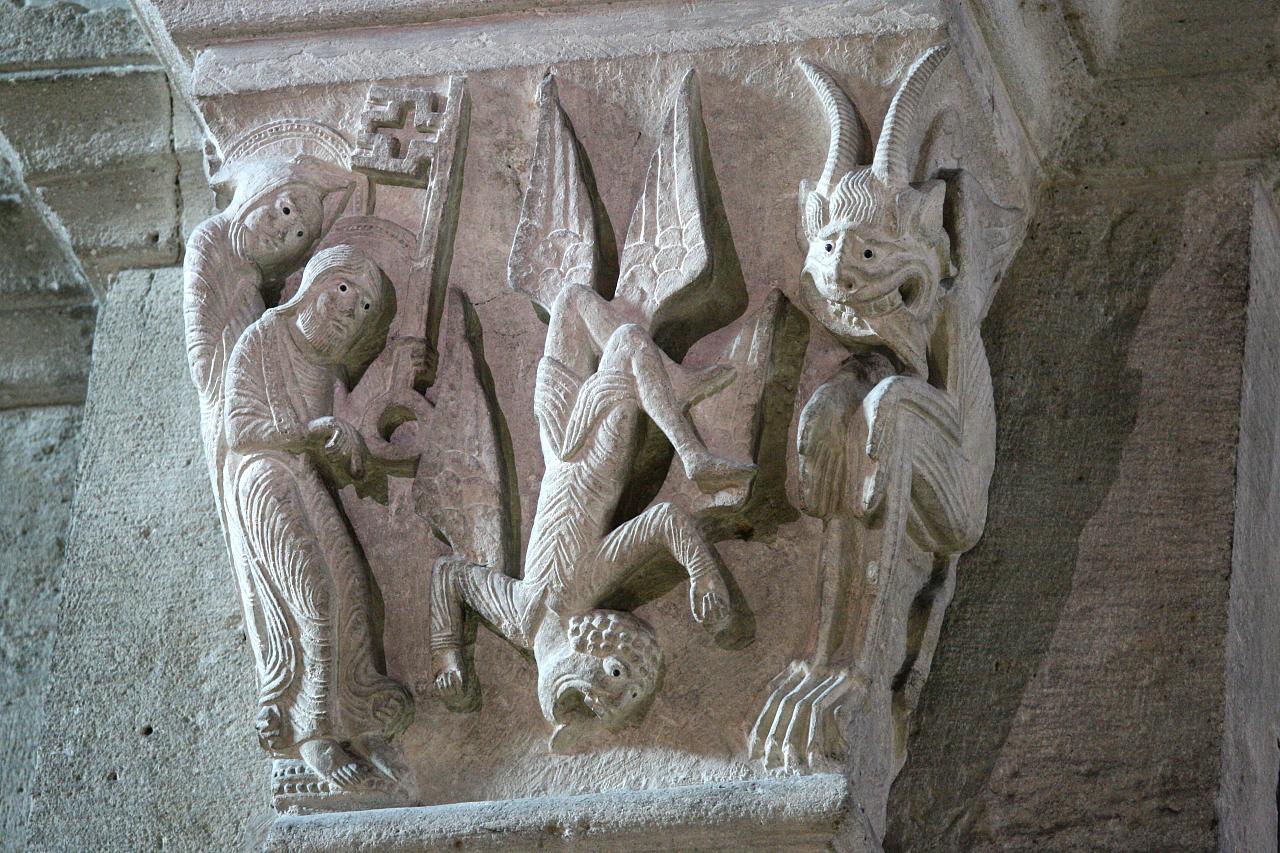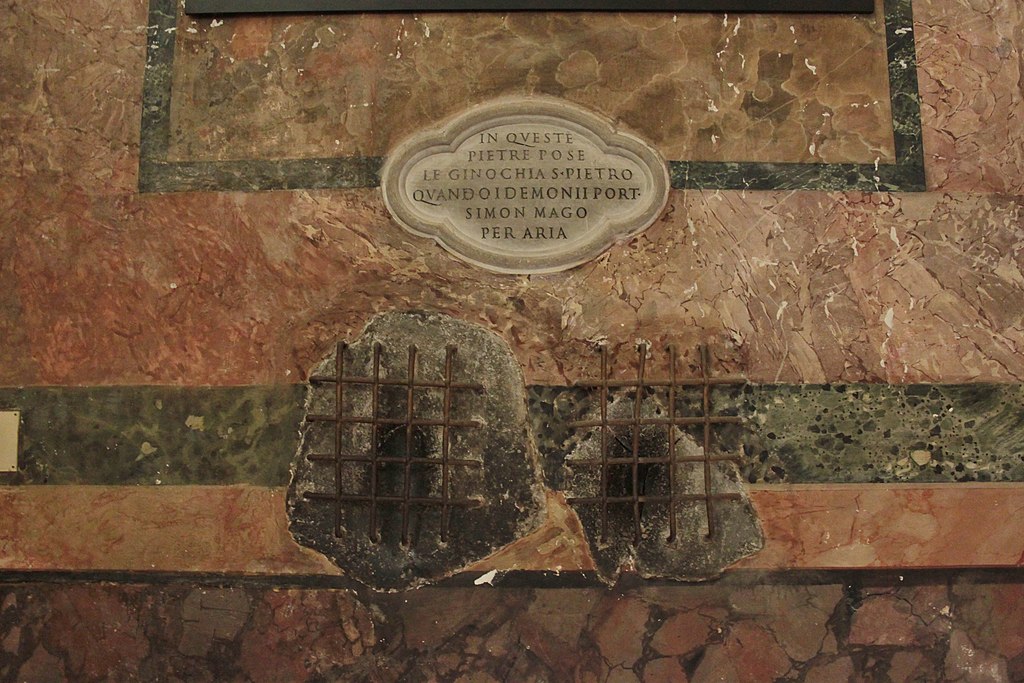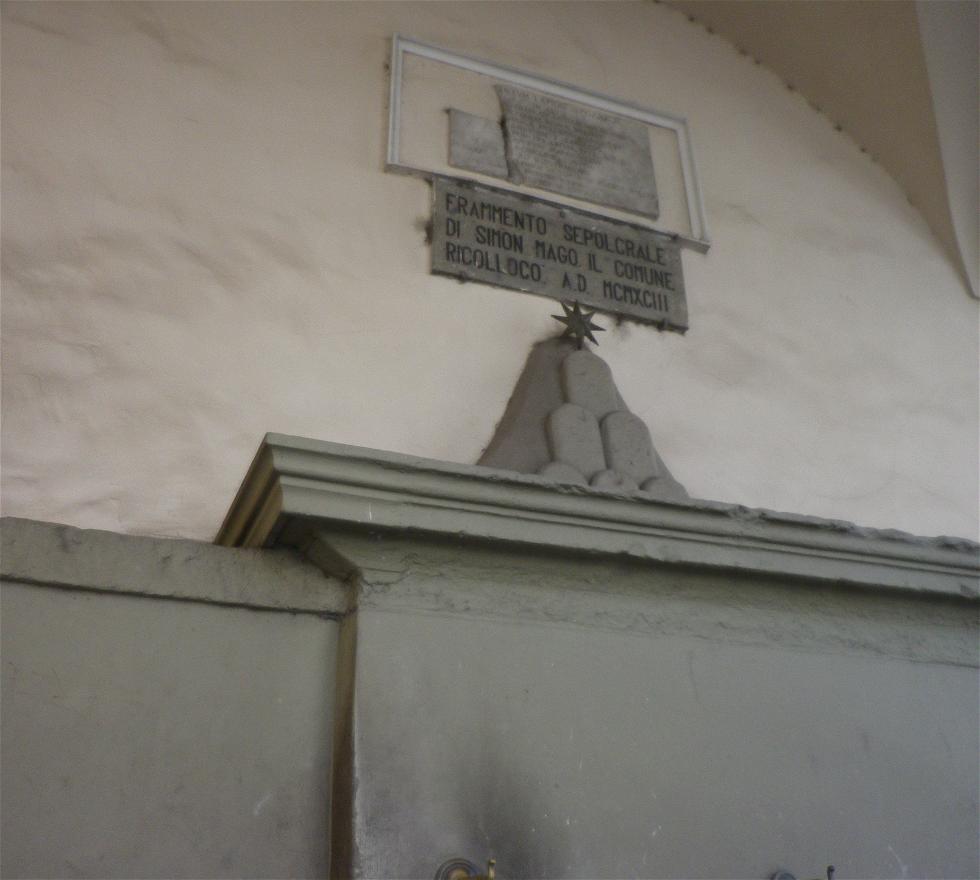
‘Gnostic’ Practices of Simon Magus
I’m only going to touch on the whys and wherefores of the ‘Gnostic’ practices of the Simon Magus, 1st century AD Christian/Zoroastrian mage who supposedly had a run in with Saints Peter & Paul in Nero’s Rome.
Briefly: Simon was a Samaritan ‘magus’ or religious figure and a convert to Christianity, baptised by Philip the Evangelist; the act of simony, or paying for position, is named after him, as he tried to buy his way into the power of the Apostles. He is described in the New Testament as:
A certain man, called Simon, which beforetime in the same city used sorcery, and bewitched the people of Samaria, giving out that himself was some great one: to whom they all gave heed, from the least to the greatest, saying, "This man is the great power of God." And to him they had regard, because that of long time he had bewitched them with sorceries. But when they believed Philip preaching the things concerning the kingdom of God, and the name of Jesus Christ, they were baptized, both men and women. Then Simon himself believed also: and when he was baptized, he continued with Philip, and wondered, beholding the miracles and signs which were done.
And when Simon saw that through laying on of the apostles' hands the Holy Ghost was given, he offered them money, saying, "Give me also this power, that on whomsoever I lay hands, he may receive the Holy Ghost." But Peter said unto him, "Thy money perish with thee, because thou hast thought that the gift of God may be purchased with money. Thou hast neither part nor lot in this matter: for thy heart is not right in the sight of God. Repent therefore of this thy wickedness, and pray God, if perhaps the thought of thine heart may be forgiven thee, for I perceive that thou art in the gall of bitterness, and in the bond of iniquity." Then answered Simon, and said, "Pray ye to the Lord for me, that none of these things which ye have spoken come upon me."
Poet, writer, and philosopher Dante Alighieri (1265-1321) saw Simon Magus in his own sub-circle of Hell where the damned were placed face down in moats of fire burning the soles of their feet.
Others see Magus in a very different light, as someone whose reputation was calumnied due to his identification of the female role in the act of Creation and his part as the bearer of esoteric knowledge (gnosis) which could enable the redemption of the human spirit. His apparent championing of women was certainly a reason for the early Christian church to take a stand agin’ him.
Miraculous ’Divine’ Feats of Magic
According to Justin Martyr (100 – AD 165) Simon performed such feats of magic during the reign of Claudius that he was regarded as a god and thus honored with a statue on Tiber Island with the inscription Simoni Deo Sancto - "To Simon the Holy God" (First Apology, XXVI).

In the 16th century, a statue was unearthed on the island inscribed to ‘Semo Sancus’, a Sabine deity, leading scholars to posit Justin Martyr confused the Sabine god with Magus.

What got me thinking about Simon Magus was how my recent travels in Italy have unconsciously followed his alleged final days - the church of Santa Francesca Romana by the Via Sacra in the Roman Forum, the "Fountain of the three spouts" in Ariccia (just outside Rome), and the seaside town of Terracina, where the injured sorcerer stayed at the house of the banished Castor and was ‘sorely cut’ by two local physicians, causing him to perish.
Spooky, no?
How did Simon Magus come to meet this fate?
Before the emperor Nero (37 – 68 AD), Simon challenged the Saints Peter & Paul to witness and match his miraculous feats in the Roman Forum. Magus was successful in flying above the crowds but the two soon-to-be Saints went down on their knees to pray for Simon to crash to earth - not to his death, but seriously injured, and in agony. This was accomplished, with Magus then beginning his painful last journey to Terracina, aided by his remaining loyal followers, the Simonians.

A version of these events are loosely depicted in the 1954 motion picture The Silver Chalice, with Jack Palance as Simon:
The Church of Santa Francesca Romana, is claimed to have been built on the spot where Simon fell. Within the Church is a slab of marble bearing the imprints of the knees of Peter and Paul.


Byzantine chronicler John of Malalas (491-578 AD) stated the body of Simon is still present on the Forum’s Via Sacra beneath a (now buried) stone enclosure called the Simonion, where four separate stones were transformed by Magus’s blood and brains into one.
In Ariccia, a pretty town in the nearby Alban Hills there stands the Fontana delle Tre Cannelle ("Fountain of the three spouts"), once erroneously believed to contain the tomb of Simon Magus due to a sepulchral fragment with his name inscribed above the edifice.

Alternative Theory of Simon’s Death
3rd century Bishop of Rome Hippolytus (170-235 AD) had different account of Simon’s death, “Until he came to Rome also and fell foul of the Apostles. Peter withstood him on many occasions. At last he came ... and began to teach sitting under a plane tree. When he was on the point of being shown up, he said, in order to gain time, that if he were buried alive he would rise again on the third day. So he bade that a tomb should be dug by his disciples and that he should be buried in it. Now they did what they were ordered, but he remained there until now: for he was not the Christ.” (His body was found putrefied)
Tales of ‘Simon the Sorcerer’ continued into the later Middle Ages, where they became the probable inspiration for the legend of Faust.
In 1999 Ben Hopkins directed and co-wrote the movie Simon Magus, with Noah Taylor, my pal from Soho days playing the magical title character, a “Mad Magic Jew”. Ian Holm is Satan. It bears little resemblance to the legend, but is worth a watch:
Holm also plays a disembodied head, much as he did in Alien (1979):

Even more of a coincidence, I once worked on an abandoned documentary project on esotericism featuring Dr Simon Magus BSc (Hons) MB BS MA PhD:
Stephen Arnell’s novel ‘The Great One’ is available on Amazon Kindle:








